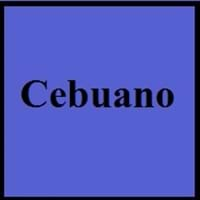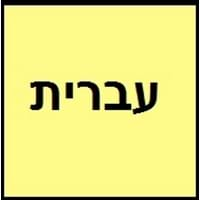Cebuano and Hebrew
Countries
Philippines
Israel
National Language
Philippines
Israel
Second Language
Philippines
Israel
Speaking Continents
Asia
Africa, Asia, Europe
Minority Language
Not spoken in any of the countries
Poland
Regulated By
Visayan Academy of Arts and Letters
Academy of the Hebrew Language
Interesting Facts
- About one-fifth of the population of the philippines speak cebuano and are second largest ethnolinguistic group in the country.
- Cebuano contains many words of Spanish origin.
- The original language of Bible is Hebrew.
- The men and women use different verbs in hebrew language.
Similar To
Hiligaynon Language
Arabic and Aramaic languages
Derived From
Island of Cebu
Aramaic Language
Alphabets in
Cebuano-Alphabets.jpg#200
Hebrew-Alphabets.jpg#200
Writing Direction
Not Available
Right-To-Left, Horizontal
Thank You
Salamat
תודה (Toda)
How Are You?
Kumusta man ka?
מה שלומך? (ma shlomxa)
Good Night
Maayong Gabii
לילה טוב (Laila tov)
Good Evening
Maayong Gabii
ערב טוב (Erev tov)
Good Afternoon
Maayong Hapon
אחר צהריים טובים (Achar tzahara'im tovim)
Good Morning
Maayong Buntag
בוקר טוב (Boker tov)
Please
Palihug
בבקשה (bevekshah)
Sorry
Ikasubo ko
סליחה! (Slicha)
Bye
Babay
להתראות (Lehitraot)
I Love You
Gihigugma ko ikaw
אני אוהבת אותך (Ani ohevet otcha)
Excuse Me
Ekskyus mi
בבקשה!
Dialect 1
Boholano
Ashkenazi Hebrew
Where They Speak
Bohol
Israel
Dialect 2
Southern Kana
Samaritan Hebrew
Where They Speak
southern Leyte
Israel, Palestine
Dialect 3
North Kana
Yemenite Hebrew
Where They Speak
northern part of Leyte
Israel
How Many People Speak?
Not Available
Speaking Population
Not Available
Native Name
Visayan
עברית / עִבְרִית (ivrit)
Alternative Names
Binisaya, Bisayan, Sebuano, Sugbuanon, Sugbuhanon, Visayan
Israeli, Ivrit
French Name
cebuano
hébreu
German Name
Cebuano
Hebräisch
Pronunciation
Not Available
[(ʔ)ivˈʁit] - [(ʔ)ivˈɾit]
Ethnicity
Cebuano people
Not Available
Origin
16th century
1000 BC
Language Family
Austronesian Family
Afro-Asiatic Family
Subgroup
Not Available
Semitic
Branch
Not Available
Canaanitic
Early Forms
No early forms
Biblical Hebrew, Mishnaic Hebrew, Medieval Hebrew, Hebrew
Standard Forms
Standard Cebuano
Modern Hebrew
Signed Forms
Not Available
Signed Hebrew
Scope
Individual
Individual
ISO 639 1
No data Available
he
ISO 639 6
Not Available
Not Available
Glottocode
cebu1242
hebr1246
Linguasphere
No data Available
12-AAB-a
Language Type
Living
Living
Language Linguistic Typology
Verb-Subject-Object
Subject-Verb-Object, Verb-Subject-Object
Language Morphological Typology
Not Available
Fusional, Synthetic
All Cebuano and Hebrew Dialects
Most languages have dialects where each dialect differ from other dialect with respect to grammar and vocabulary. Here you will get to know all Cebuano and Hebrew dialects. Various dialects of Cebuano and Hebrew language differ in their pronunciations and words. Dialects of Cebuano are spoken in different Cebuano Speaking Countries whereas Hebrew Dialects are spoken in different Hebrew speaking countries. Also the number of people speaking Cebuano vs Hebrew Dialects varies from few thousands to many millions. Some of the Cebuano dialects include: Boholano, Southern Kana. Hebrew dialects include: Ashkenazi Hebrew , Samaritan Hebrew. Also learn about dialects in South American Languages and North American Languages.
Cebuano and Hebrew Speaking population
Cebuano and Hebrew speaking population is one of the factors based on which Cebuano and Hebrew languages can be compared. The total count of Cebuano and Hebrew Speaking population in percentage is also given. The percentage of people speaking Cebuano language is 0.32 % whereas the percentage of people speaking Hebrew language is Not Available. When we compare the speaking population of any two languages we get to know which of two languages is more popular. Find more details about how many people speak Cebuano and Hebrew on Cebuano vs Hebrew where you will get native speakers, speaking population in percentage and native names.
Cebuano and Hebrew Language Codes
Cebuano and Hebrew language codes are used in those applications where using language names are tedious. Cebuano and Hebrew Language Codes include all the international language codes, glottocodes and linguasphere.





